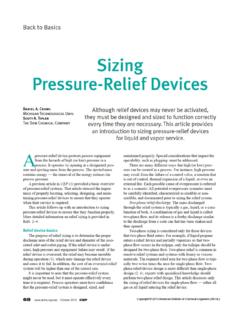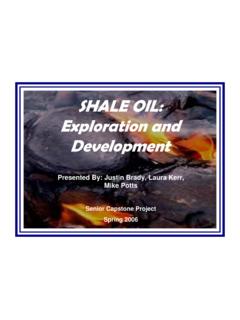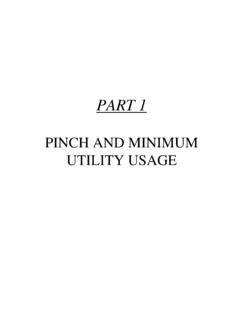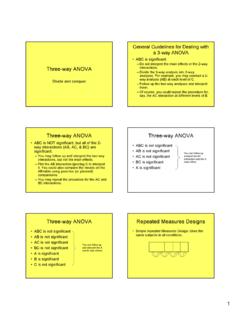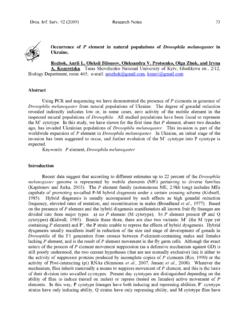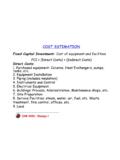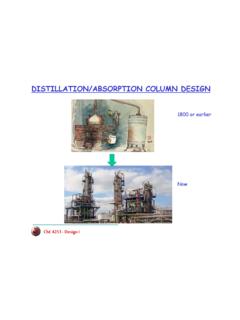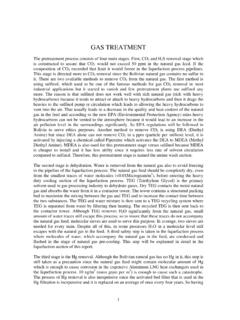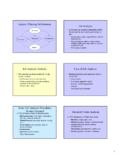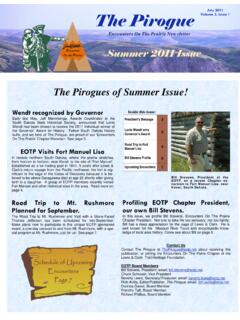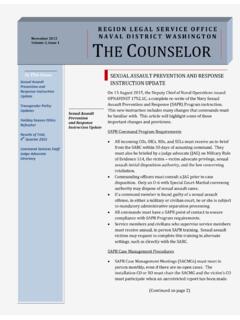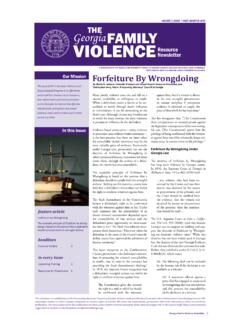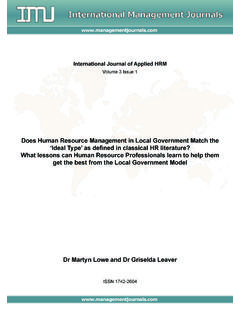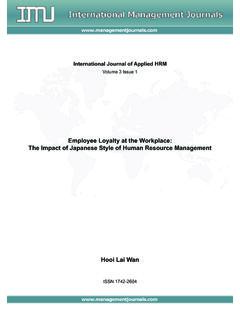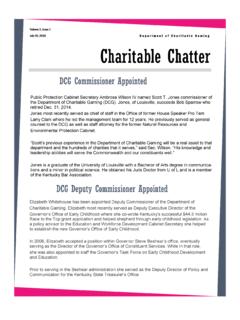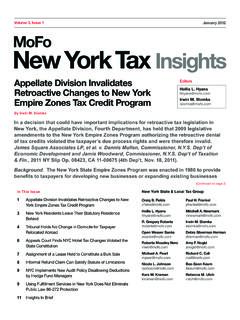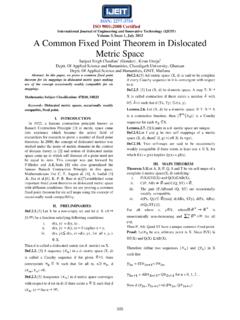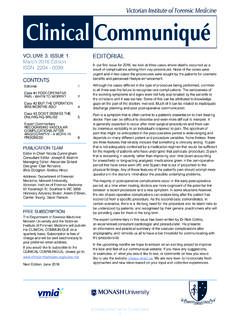Transcription of CLS Journal of Museum Studies, - University of Oklahoma
1 CLS Journal of Museum studies , volume 3, Number 1 i CLS Journal of Museum studies , Vol. 3, No. 1. (2009) URL: CLS Journal of Museum studies is currently published online by the College of Liberal studies , MALS Museum studies Program, the University of Oklahoma . Your use of the CLS Journal of Museum studies archives indicates your acceptance of the Terms and Conditions of Use, available at Museum professionals, students, and other readers are encouraged to distribute the articles published in this Journal as widely as possible, to use them in classes, and to reprint them as needed. For commercial use of any of these articles ( , charging for articles, republishing figures, tables, text, etc.), permission must be obtained from the Editor. All questions relating to the Journal should be directed to the Editor.
2 Publisher contact information may be obtained at Each copy of any part of a CLS Journal of Museum studies transmission must contain the same copyright notice that appears on the screen or PDF file of such transmission. CLS Journal of Museum studies is an independent not-for-profit publication dedicated to creating and preserving a digital archive of scholarly articles in the field of Museum studies . For more information regarding CLS Journal of Museum studies , please contact Dr. Michael Mares at Publication date: December, 2009 ii CLS Journal OF Museum studies volume 3, Number 1/2009 The CLS Journal of Museum studies is issued annually (with individual numbers appearing as they are completed) by the College of Liberal studies , MALS Museum studies Program of the University of Oklahoma .
3 The CLS Journal of Museum studies is designed to provide a worldwide e- Journal as a publication outlet for students enrolled in the Museum studies Program of the College of Liberal studies of the University of Oklahoma . The Journal is also designed for use by faculty in the CLS MALS program. Any topic of relevance to the field of Museum studies is considered suitable for publication in the Journal . Contributions may be solicited by the Editor from Museum professionals not affiliated with the MALS Museum studies Program. All submissions are reviewed by one or more members of the Editorial Board or by outside reviewers. COVER ILLUSTRATION: A drawer of tropical birds in the Bird Collection of the Sam Noble Oklahoma Museum of Natural History. Photo by Michael A. Mares. CLS Journal of Museum studies , volume 3, Number 1 iii Journal Editor Dr.
4 Michael A. Mares, Director, Sam Noble Oklahoma Museum of Natural History, and Joseph Brandt Professor, Department of Zoology, University of Oklahoma Editorial Board Gail Kana Anderson, Assistant Director/Curator of Collections, Fred Jones Jr. Museum of Art, University of Oklahoma Marcia Britton, Executive Director, Wyoming Council for the Humanities, Laramie, Wyoming Byron Price, Director, University of Oklahoma Press and Charles M. Russell Center for the Study of Art of the American West, University of Oklahoma Peter Tirrell, Associate Director, Sam Noble Oklahoma Museum of Natural History, University of Oklahoma Dr. Mary Jo Watson, Director and Regents Professor, School of Art and Art History, University of Oklahoma CLS Journal of Museum studies , volume 3, Number 1 iv CLS Journal of Museum studies , Vol.
5 3, No. 1. (2009) The CLS Journal of Museum studies is published annually by the College of Liberal studies , MALS Museum studies Program, the University of Okla-homa Dr. Michael A. Mares, Journal Editor Manuscripts submitted for the Journal and all correspondence concerning them should be addressed to Dr. Michael A Mares. Guidelines for contributors are given on the last page of this volume . Copyright 2009 by the College of Liberal studies , University of Oklahoma Laid out by Catherine Kerley, on a format established by Dr. Michael A. Mares. CLS Journal of Museum studies , volume 3, Number 1 CLS Journal of Museum studies , Vol. 3, No. 1. (2009) Contents 2008 Natural Science Collections Alliance Economic Impacts Survey 1 Robert Gropp and Michael A. Mares Book Review by Tony Mares: Tourists of History: Memory, Kitsch, and Consumerism from Oklahoma City to Ground Zero, by Marita Sturken 18 CLS Journal of Museum studies , volume 3, Number 1 v 1 Kangaroo rats, University of New Mexico, Museum of Southwestern Biology 2008 Natural Science Collections Alliance Economic Impacts Survey Robert Gropp Director, Public Policy Office, American Institute of Biological Sciences 1444 I Street, NW, Suite 200 Washington, DC 20005.
6 Email Michael A. Mares Director, Sam Noble Oklahoma Museum of Natural History, University of Oklahoma , Norman, OK. 73072; former President, Natural Science Collections Alliance. E-mail: T he Natural Science Collections Alliance (NSC Alliance) is the nation s leading non-profit organization dedicated to advancing the interests of natural science collections, their human resources, the institutions that house them, and their research activities for the benefit of science and society. NSC Alliance members are part of an international community of muse-ums, botanical gardens, herbariums, universities and other institutions that house natural science collections gathered over centuries of exploration and utilize them in research such as biodiversity studies , global climate change, patterns of extinction, global habitat changes, the pace of environmental destruction, emerg-ing diseases, genetic research, pest invasion biology, and agricultural and public health threats, mineral and geosciences research, among others (Suarez and Tsutsui 2004).
7 Collections are also used in exhibitions, in academic and informal science education, and in outreach activities to tens of millions of people each year. 2 CLS Journal of Museum studies , volume 3, Number 1 Abstract. The National Science Collections Alliance conducted a survey of natural science collections in October 2008. The survey was designed to capture the impact of the economic recession on natural science collections in the United States. Private and government funding accounts for half of support for natural history and natural science museums , therefore it was expected that natural science collections would be negatively impacted by the ailing econ-omy. Two thirds of the 88 collections that completed the survey anticipate a budget cut in the coming 12-24 months.
8 Of the 86 percent of respondents that receive philanthropic donations, about half expect to see reduced donations in the coming 12-24 months. Half of the collections anticipate that government grants and contracts will play a more important role in research and education programs in the future. Despite uncertainty about future funding, natural science collections continue to provide public education: 87 percent of collections report stable or in-creased public attendance in the previous 12-24 months. The results of the survey highlight the need for collections to prepare for institutional budget cuts, build partnerships in their commu-nity, and work with other collections to share best practices. Actions by the federal government could also help to relieve the burden on science collections.
9 The President should establish an interagency council to facilitate coordination among federal programs that fund or manage collec-tions-related research and education. Finally, both the President and Congress should seek significant increases in federal funding for collections-based research and education programs. In 2008, the economic condition of the United States was weakening. By the fall, domestic and global economies were in recession and indicators of eco-nomic health were in decline (Bureau of Economic Analysis 2009, Landler 2008, Rooney 2008, and Wall Street Journal 2008). Across the nation, state budgets began to tighten as tax revenues decreased (NGA/NASBO 2008). Bank failures loomed, home foreclosures increased, major companies failed, and unemploy-ment rates increased (Bureau of Labor Statistics 2009).
10 This combination of economic factors affected all sectors, including public and private educational institutions, museums , philanthropic charities, and endowments (Blumenstyk 2009, Masterson 2009, and Vogel 2008). Economic conditions impact natural science collections directly, whether the collection is part of a large natural history Museum or a science department at a small liberal arts college. Regardless of whether a collection supports funda-mental research and development, K-16 education, public education, or govern-ment decision-makers that require ready access to the irreplaceable information stored in the nation s natural science collections, operational budgets are built from a mix of federal grants and contracts, state and local revenue sources, cor-porate donations, philanthropic donations, and endowments all sectors that lost significant revenue/value in 2008.
